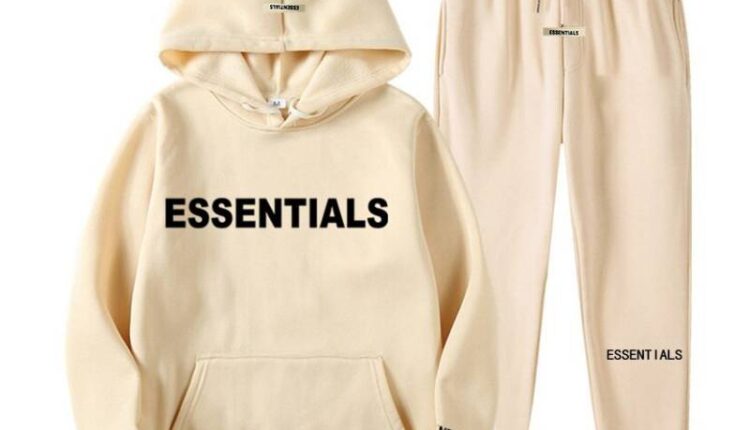How the Essential Hoodie Became a Fashion Staple
There was a time when the hoodie was seen as nothing more than sportswear or casual attire for off-duty days. It was the piece you reached for on a lazy Sunday or a cold morning when fashion wasn’t your main concern. But today, the Essentials Hoodies has transformed into a global fashion staple—appearing on runways, in high-end collections, and in wardrobes of all styles. It’s not just a trend, but a cultural symbol that has evolved with society. So how did this once-humble garment become one of the most important pieces in contemporary fashion? The answer lies in its journey through history, subcultures, comfort, and reinvention.
Origins in Function and Utility
The hoodie as we know it today first appeared in the 1930s, created by American companies as functional workwear for laborers in cold warehouses. Its design was practical—warm, durable, and protective, especially with the addition of the hood. It was soon adopted by athletes and became a staple in gyms and locker rooms, particularly among boxers and runners who needed warmth without restriction. At this stage, the hoodie had no association with fashion. It existed purely for utility and comfort, which ironically became its greatest strength in the years to follow.
From Streetwear to Symbolism
The hoodie’s transition from functionality to fashion began in the 1970s and 1980s, when it became a favored garment in emerging street and hip-hop cultures. Inner-city youth, skateboarders, and breakdancers embraced the hoodie not only for its comfort but for its anonymity and edge. It offered a sense of individuality, rebellion, and authenticity. It wasn’t just clothing—it was expression.
Artists, musicians, and athletes began to incorporate hoodies into their public appearances, and soon the hoodie became tied to cultural identity. In this way, the hoodie was no longer just about warmth—it started carrying meaning. It stood for resistance, creativity, and the voice of the streets. This shift laid the foundation for its evolution into a fashion statement.
Pop Culture and Media Influence
The hoodie’s rise in popularity can also be credited to its appearance in movies, music videos, and popular culture. From Rocky Balboa’s iconic training scenes to Eminem’s gritty performances, the hoodie was front and center. It became associated with underdogs, fighters, and those who pushed boundaries. Meanwhile, in the skate and punk scenes, it was part of a uniform that rejected mainstream fashion while unintentionally influencing it.
In the early 2000s, the hoodie began appearing in youth-focused television and celebrity street style, further solidifying its place in pop culture. Once it reached the closets of icons and influencers, it was no longer confined to subcultures—it became a universal symbol of cool.
The Shift to High Fashion
What truly cemented the hoodie’s place in modern fashion was its acceptance by the luxury fashion world. Designers began experimenting with its silhouette, fabric, and fit, elevating it from casualwear to couture. Brands like Vetements, Off-White, Balenciaga, and Yeezy introduced hoodies in their collections, treating them with the same care and precision as tailored suits or dresses.
This was a turning point. The hoodie was no longer just a comfortable afterthought—it was central to fashion conversations. Suddenly, hoodies made from premium materials, with minimalist or avant-garde designs, were being sold for hundreds or even thousands of dollars. The fashion world had not only embraced the hoodie—it had redefined it.
A Perfect Fit for the Modern Lifestyle
The hoodie’s evolution aligns perfectly with broader cultural shifts. As modern life becomes faster and more flexible, people are prioritizing comfort in what they wear. The rise of remote work, the blending of home and office life, and the increased focus on wellness have all contributed to the popularity of practical clothing. The hoodie fits perfectly into this new world—it’s versatile, easy to wear, and always comfortable.
But more than that, the hoodie feels personal. It adapts to you, your mood, your style. You can wear it oversized for a relaxed vibe, fitted for a clean look, layered for sophistication, or solo for simplicity. There’s a hoodie for every season, every setting, and every person. That’s the power of a true staple.
The Future of the Hoodie in Fashion
As fashion continues to evolve, the Essentials Tracksuit shows no signs of fading. If anything, its role is expanding. Sustainability-conscious brands are now creating hoodies from recycled and organic materials. Tech companies are designing smart hoodies with built-in features for travelers or digital nomads. The garment has become a blank canvas for both innovation and self-expression.
It’s also an item that resists gender and age limitations. The hoodie is just as relevant in a teenager’s closet as it is in the wardrobe of a fashion-forward adult. It transcends boundaries and brings comfort to anyone who wears it. That kind of universal appeal is rare in fashion, and it’s why the hoodie continues to thrive.
Conclusion
The essential hoodie’s journey from workwear to fashion icon is a testament to how culture, comfort, and creativity can transform even the simplest garments. It’s more than a piece of clothing—it’s a reflection of changing times, shifting values, and evolving identities. As fashion becomes more inclusive and functional, the hoodie remains at the center of it all—comfortable, cool, and endlessly relevant. What began as a necessity has become a statement, and it’s clear that the hoodie’s story is far from over.


